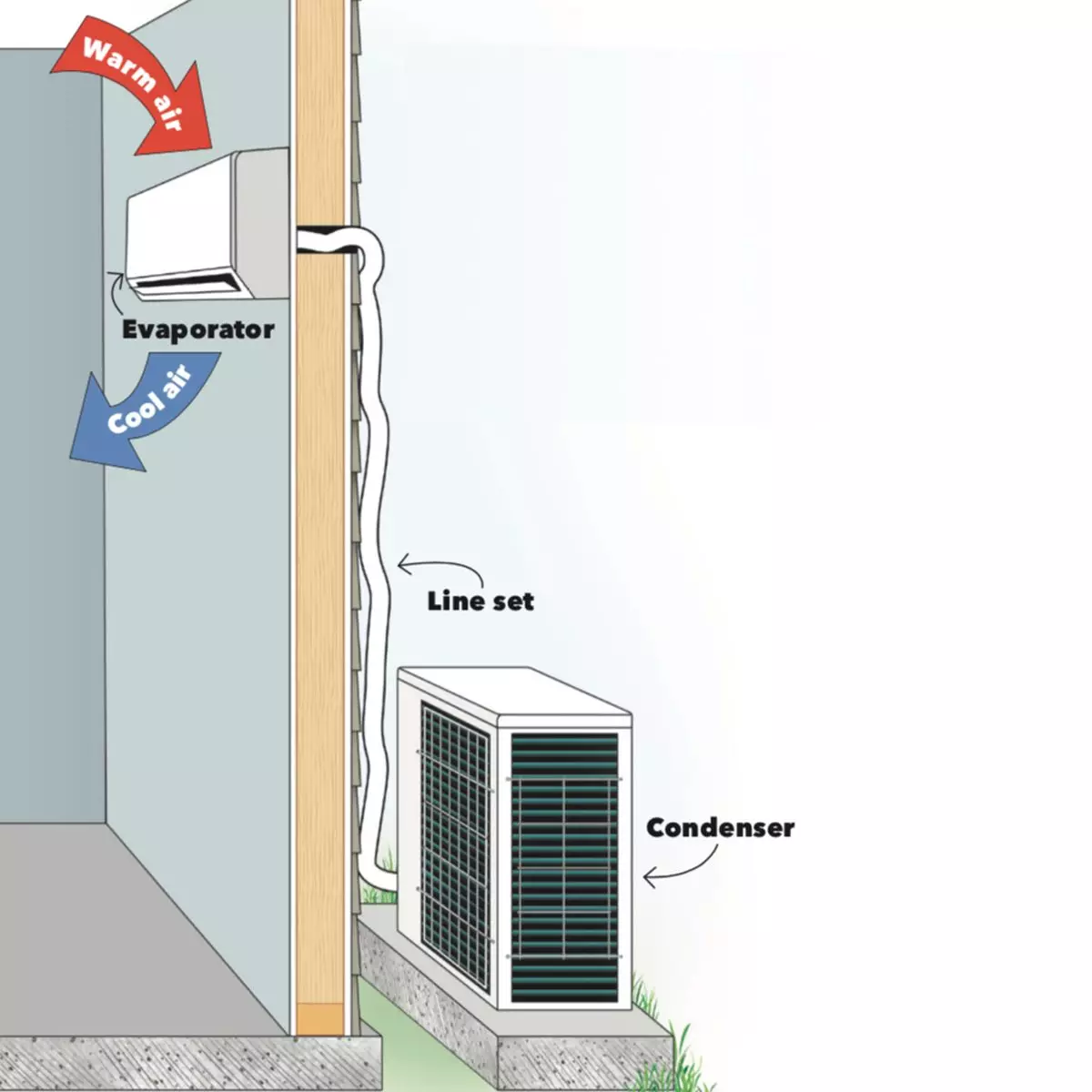Have you ever considered installing an A/C system yourself? While it may seem like a job for professionals, it's entirely possible for non-pros to tackle the installation of a ductless mini split air conditioner. In fact, we'll walk you through the process step by step, so you can do it yourself with confidence.
The Easy Installation Process
The secret to the fast and easy installation of a ductless mini split air conditioner lies in the special line set that comes prefilled with refrigerant. This convenient feature eliminates the need for special skills or tools. All you have to do is mount the two main units and connect the line set to the condenser. While some mini-splits come with an easy-install line set, most do not, so it's essential to choose the right system for your needs.
 Image Source: Family Handyman
Image Source: Family Handyman
Understanding How Ductless Air Conditioners Work
Before you dive into the installation process, it's essential to understand how a ductless mini split air conditioner works. This system comprises two main components: an indoor evaporator and an outdoor condenser. These components are connected by a line set, which passes through a small hole in the wall. The line set carries hot refrigerant outside and cold refrigerant in, ensuring efficient cooling. In addition to the refrigerant lines, the line set also includes cable for power and a drain line for condensation.
Choosing the Right System
When it comes to selecting a ductless mini split air conditioner, online shopping is your best bet. While very few brick-and-mortar stores carry DIY systems, there are numerous online suppliers to choose from. The size of the system is measured in BTUs (British thermal units), and it's crucial to select the right size based on the heat loss of the room. Luckily, several websites offer simplified calculations to help you make the right choice. Remember, an undersized system won't cool effectively, while an oversized system will cycle on and off too frequently, shortening the condenser's lifespan.
Providing Power
One of the significant challenges of a ductless air conditioner installation is running power to the system. For small systems, you may be able to draw power from an underloaded 20-amp circuit nearby. However, in most cases, it's recommended to install a new circuit dedicated solely to the mini-split. Running cable from the main panel to the unit may be a small job or a more extensive project, depending on the accessibility of the walls.
Working with a local electrician can make this process smoother, ensuring compliance with electrical codes. By cutting a few small holes in the drywall, you can run the cable from the basement up through the garage wall, through the attic, and out the exterior wall to a disconnect box. The disconnect box provides an easy and safe way to turn off the power when servicing the unit. While the cost of electrical supplies may amount to around $160, seeking expert help from an electrician is a wise investment.
Essential Materials
In addition to the main components and power supply, a few other materials are necessary for a successful ductless air conditioner installation. The condenser requires a level surface to rest on, and you can either pour a concrete pad or opt for a plastic condenser pad for instant and easy setup. Additionally, mounting the condenser on wall brackets ensures stability.
To enhance the aesthetic appeal and cleanliness of the installation, a plastic line set cover kit is recommended. This cover conceals and protects the line set, preventing any unsightly appearances or dirt accumulation. Investing in these materials, such as the condenser pad and line set cover kit, ensures a professional-looking installation.
Remote Control Convenience
To adjust the room temperature conveniently, a handheld controller is included with the ductless mini split air conditioner. Some models even offer advanced features like Wi-Fi and Bluetooth control, allowing you to control your cooling system remotely.
By following these DIY instructions, you can successfully install a ductless mini split air conditioner in your home, garage, cabin, or shed. With the right materials and a little guidance, you'll be able to enjoy cool and comfortable spaces without the need for professional assistance.

















